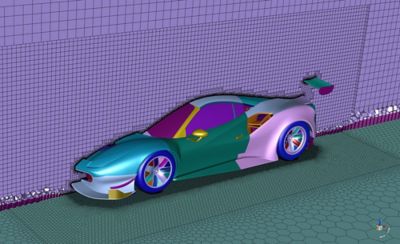-
-
Software gratuito per studenti
Ansys potenzia la nuova generazione di ingegneri
Gli studenti hanno accesso gratuito a software di simulazione di livello mondiale.
-
Connettiti subito con Ansys!
Progetta il tuo futuro
Connettiti a Ansys per scoprire come la simulazione può potenziare la tua prossima innovazione.
Paesi e regioni
Customer Center
Supporto
Partner Community
Contatta l'ufficio vendite
Per Stati Uniti e Canada
Accedi
Prove Gratuite
Prodotti & Servizi
Scopri
Chi Siamo
Back
Prodotti & Servizi
Back
Scopri
Ansys potenzia la nuova generazione di ingegneri
Gli studenti hanno accesso gratuito a software di simulazione di livello mondiale.
Back
Chi Siamo
Progetta il tuo futuro
Connettiti a Ansys per scoprire come la simulazione può potenziare la tua prossima innovazione.
Customer Center
Supporto
Partner Community
Contatta l'ufficio vendite
Per Stati Uniti e Canada
Accedi
Prove Gratuite
ANSYS BLOG
April 17, 2019
Discover How Ferrari Competizioni GT Produces Simulations 3x Faster with a New CFD Workflow
On the Le Mans raceway, aerodynamics can mean the difference between first place and passing the checkered flag with the middle of the pack. Ferrari Competizioni GT has opened a new partnership agreement to use Ansys’ computational fluid dynamics (CFD) software to further optimize the performance of its racing cars.
Every two or three years, Ferrari Competizioni GT enters a 12-month development cycle to engineer a new GT racing car. Historically, this development cycle includes the CFD technology of Ansys Fluent.
This Mosaic mesh is created by Ferrari
Competizioni GT. Mosaic meshing
workflows helped the team produce
three simulations in the time they once
produced one simulation
This year, the engineering team chose to use Ansys’ Mosaic-enabled Poly-Hexcore CFD meshing technology.
“With Mosaic technology and Fluent’s single window workflow, our team runs three times as many simulations in the same amount of time,” said Ferdinando Cannizzo, Ferrari Competizioni GT's Head of GT Racing Car Development.
The Benefits Mosaic CFD Meshing Brought to Ferrari Competizioni GT
Mosaic meshing solves Ferrari Competizioni GT’s need to create a transition zone between a fine CFD mesh, near the racing car’s surface, and a coarser mesh, within the fluid bulk.
Mosaic meshing simplifies the transition from fine to coarse meshes.
This Mosaic mesh is created by Ferrari Competizioni GT
Traditionally, this transition zone is made up of nonconformal interfaces or tetrahedral meshes. However, these methods can create meshes with large cell counts and slow performance.
Mosaic meshing, however, connects disparate meshes using general polyhedral elements.
“Mosaic-enabled meshing is making a considerable impact on our aerodynamics designs — letting us achieve improved accuracy using far less cells and solving in half the time,” said Cannizzo.
The team also took advantage of automated workflows within Fluent. These workflows reduced the hands-on work to create a CFD simulation and took advantage of parallel high-performance computing (HPC) to mesh the geometry.
“Ferrari Competizioni GT racing cars represent the pinnacle of commercial car racing and we are proud to help them engineer new aerodynamic designs leading to more victories on the track,” said Sandeep Sovani, director of the Global Automotive Industry at Ansys. “Teams are always looking for performance advantages and Mosaic meshing accelerates all stages of the simulation workflow, answers design questions sooner to maximize production efficiency and supports tight developmental timelines.”
To learn more about Mosaic Meshing, read: How to Build a Computational Fluid Dynamics Mesh for Fast and Accurate Simulations.
To learn how to take advantage of parallel processing to create a CFD mesh, read: How to Use Parallel Processing to Generate a 3D Mesh for CFD on an HPC.

